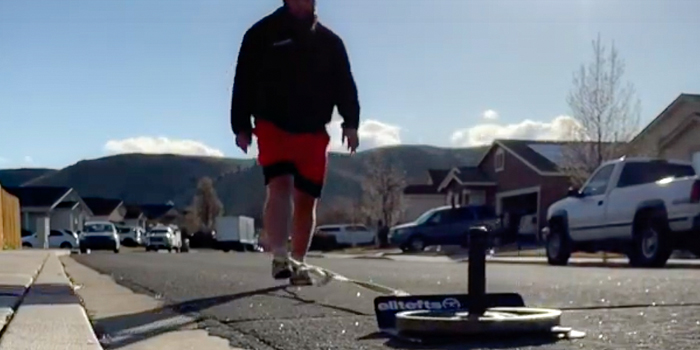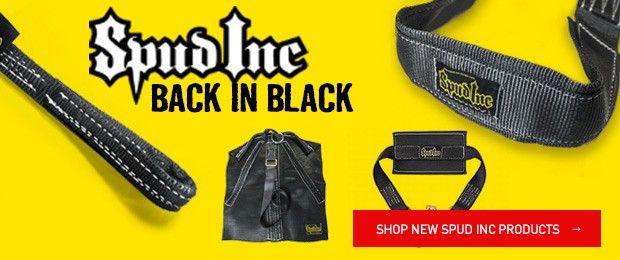
Not having a gym to go to is not the end of the world. I believe it is an opportunity. With the right perspective, this situation gives us a chance to put more tools in our toolbox and forces us to gain more knowledge on how to use those tools better. An auspicious tool that is drastically overlooked is the dragging sled. Even in these days of forced home training, I do not see much information about sled dragging. I see lots of bands, bodyweight exercises, and lightweight information, which is all great, but in my opinion, sleds are right up there.
The sled is a very inexpensive alternative for training at home or anywhere, for that matter. I have the elitefts sled and am thinking about purchasing a SPUD INC sled as well to use on grass areas (this can be bought on elitefts as well). No law is saying I can’t load up a sled with a couple of plates to take to the park. Sleds can be purchased in the $100 to $200 price range depending on straps. I recommend two straps to increase your options when working with the sled. Then all you need are some 25- and 45-pound plates, which I recommend picking up locally on one of the for sale websites or even garage sales. In most cases, people can get a great train with just a couple of plates. Of course, there are some fun things to do if you have more plates as well.
RECENT: Excuses are the Language of Quitters and Non-Starters
A sled is one of the most versatile pieces of equipment you can buy. Ironically most people never venture beyond just simple forward dragging. Just like any at-home training, your only limited by your imagination. I can easily simulate any piece of equipment with a movement performed using a sled. Yes, you can even do a great upper body training session with a sled. Once you open up your mind and free your thought process, there are hundreds of exercises you can perform with a sled.
Since my ADD would kick into hyper warp speed if I tried to write down every single exercise you can do, I am going to break it down into four major categories. I also do this because I find the whole creative part fun and want you guys to use your minds as well as your bodies. My goal here is to get you started and then have you take the control to develop some of your movements with the sled. Remember, training is hard and very demanding, but still, this shit is fun!
Dragging
My first category is dragging. This is just different ways of dragging the sled without a lot of extra movements. This is about as far as many people get, but even with just straight dragging, there are many different options. I am a big fan of looping my belt through a strap to drag because this gives me better feedback to brace. Oh yes, bracing is a huge part of all sled work and should always have focus. Dragging is great for the muscles of the lower body while getting blood pumping and the lungs expanding.
Forward dragging with my belt is a standard, but it goes way beyond that. With my belt on, I will drag backward for my thighs, and I do this in a sort of semi squatted linebacker position. I like to do a side step or shuffle which works the hips, adductors, and abductors well. You can also drag by holding the straps (one strap looped through the main strap) over your shoulders forward and backward, which will bring more core work and low back into the mix. The duck walk is insanely horrible, but great at the same time. I do this by holding one end of the looped strap in each hand behind my knees then just walk taking little duck steps. One of my favorite ways to drag is with each end of the second strap around each ankle—a great hip flexor exercise.
You have to focus on balance and very deliberate steps drawing each knee up high. I will also do this same setup backward, giving the glutes some serious work. Don’t forget you can change up the pace as well. I do a lot of walking but add in jogging and sprints as well. You can easily do a great 20-minute session with just dragging.
Movement
The next category is movement. This is doing exercises with the sled. A big benefit to this is that there is no eccentric phase, which is very helpful in recovery. Most of the exercises I do here are done with one main strap, then a second looped through that one. This is where the number of possibilities skyrockets. For example, you can do a bench press, and when you lockout, you step forward while pulling yourself into the beginning position. Once back at that position, you press again. Step forward and repeat the process. I have done this for distance and reps. I don’t see one as better than the other, just personal preference. You can do bench press, tricep extensions, curls, front raises, lateral raises, face-pulls, elbows out extensions, flyes, scap retraction, bent military press, arms straight out curls, rear dealt flyes, side twist, YWT’s, bent lat pull-downs, pull-downs, rows, etc.
Sometimes I take it from the standpoint of what muscle do I need to hit and then figure out what exercises I can create to hit it. With this category, you usually don’t even need much weight to get in an outstanding training session.
Static
Let's move on to the static category. This one is more about stabilizers and has a similarity to isometrics. The idea here is to find a position and hold it while dragging the sled. YWT’s are a great one for this. So I will grab the strap in each hand and get in the Y position. Next, I just start dragging the sled while holding that Y position. Very simple and very, very effective. This can be done with any movement and in any position. For example, let's take rows and say we do a trip tucked into a tight row position. Then do a trip holding in a half row position and follow it up with a trip holding in a ¾ position. This works with every exercise I listed up in the movement category.
Unilateral
My last category is unilateral, which can be subdivided into the static and movement categories. I am a big fan of unilateral movements, especially in terms of recovery and supplemental training. I also believe this is something many lifters forget to add. With the sled, it is kind of hard to do much lower body unilaterally. I could list forward and backward walking with straps around ankles. It would also be possible to do movements like hip extension, flex, abduction, and adduction, but I honestly have never tried it. I mostly use this with upper body movements. For example, I can do a one-arm bench press movement in either a static or dynamic. An additional bonus in this category is the amount of work that is placed on the midsection during these movements. As with static movements, all the exercises I listed under the movement category can be done unilaterally.
If you figure cost per usefulness, it is hard to beat a sled for training equipment. I have been using them for years, and they were a big part of my recovery training in my hay day. I know some people worry about dragging a sled in their neighborhood or what their neighbors will think, but I have personally never had an issue at any of the neighborhoods I have done it in. In fact, I've only had was positive reactions. The kids usually think it is awesome and want to try it. The adults may ask about it and usually end up thinking it is a pretty cool idea. Right now seems like a prime time to get on elitefts and look at them. I hope you get one to try. You'll find the sled is something you can continue to use with great results even when the gyms open back up.











Now, if only the weather would cooperate so I could get the sled out!